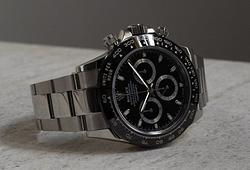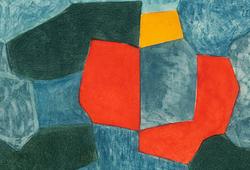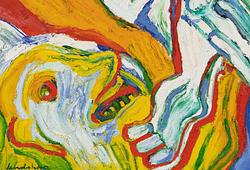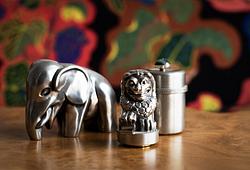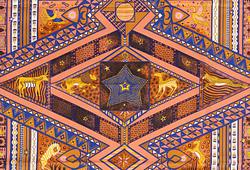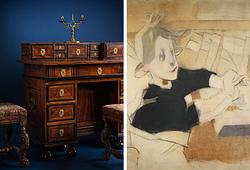Anna Petrus
Four cast iron reliefs, Näfveqvarn, Sweden, pieces of a table designed for the Metropolitan exhibition in New York 1927.
Partly black painted, decorated with a man and a woman's head and a plant loop, two of the reliefs stamped SWEDEN and marked A. Petrus. Each relief 85 x 25 cm, mounted to a modern dark stained wooden base with a carrara marble top, 230 x 115 cm, total height 88 cm.
Wear.
Täydennyslista
Droit de suite (d).
Alkuperä - Provenienssi
The Director's villa, Näfveqvarns Bruk, Nyköping, thence in descent.
Näyttelyt
The reliefs are most probably the legs to one of the three original tables, exhibited at the "Swedish Contemporary Decorative Arts" at the Metropolitan Museum of Arts in New York 1927.
One of these three tables was also shown at the Stockholm exhibition in 1930.
Kirjallisuus
Gregor Paulsson (ed), Svenska Slöjdföreningens Tidskrift, Stockholm 1927, häfte 2, see pp 25-37.
Christian Björk, "Näfveqvarns Bruk - Konstnärer och arkitekter till industrin", Orosdi-Back 2013, the tables depicted from the New York Exhibition 1927, p 107, as well as details and sketches pp 104-105, see also the model depicted from the Stockholm Exhibition 1930, p 163.
The Carl Bergsten archives, ArkDes, Stockholm, see Carl Bergsten's scetch with the three Anna Petrus tables for the exhibition at the Metropolitan Museum of Arts in New York 1927.
Muut tiedot
Three tables were made for the Swedish Exhibition of Decorative arts at the Metropolitan Museum in New York in 1927. Following the success in Paris 1925, Sweden, as a single nation, was for the first time invited to attend an art exhibition at the Metropolitan Museum of Arts in New York. The exhibition opened January 17 in the presence of H.K.H. Prince Wilhelm and Sweden's Envoy in Washington, Mr Wolman Boström. The exhibition was a success, and in the SSF's Journal (Form) in 1927 Gregor Paulsson writes that "reportedly no exhibition has had such a publicity in the daily New York newspapers. The number of visitors was very large. The highest number of visitors on a day was 6000 people, which is a record at the Metropolitan Museum". Invitations came later to move the exhibition to other cities in the United States, including Detroit and Chicago. After the Stockholm exhibition in 1930, where one of the tables was shown, the tables were put away and this table was mounted apart.






